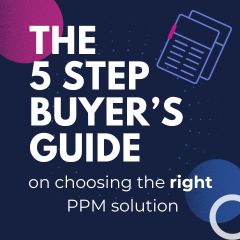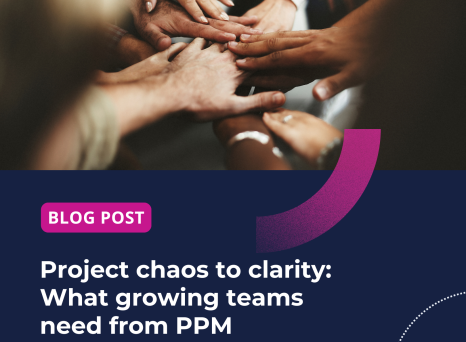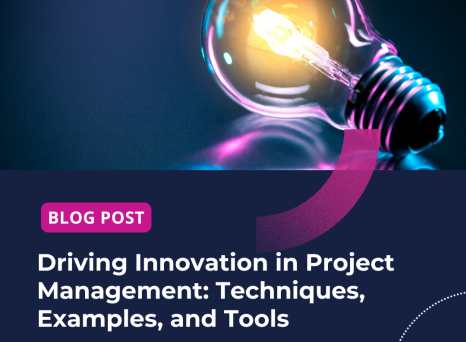A mid-COVID market boom caused revenue to soar for many professional services organizations (PSOs).
A mid-COVID market boom caused revenue to soar for many professional services organizations (PSOs). While this was a welcome uplift, it did have its downsides. Specifically, the boom highlighted critical issues and priorities in PSO service delivery practices.
For instance, 85% of PS stakeholders now rank increasing “customer adoption/value” as their top priority. The report suggests that this is a natural result of “digital transformation and a progression toward a consumption economy”.
In the current professional services market, increasing customer adoption, proving value, and outperforming competitors is crucial. However, it can be difficult to boost adoption rates without having the right financial and project management data to hand.
This is why many PSOs are adopting solutions that offer Professional Services Automation (PSA) capabilities.
PSA solutions serve a similar purpose to Portfolio Project Management (PPM) solutions in terms of improving project management, organization, and resource allocation. But there are some key distinctions. Today, we’ll break down these differences, helping you to understand which tool is best for your use case.
Defining PPM and PSA
Let’s begin with a side-by-side comparison of the key definitions.
PPM, by our own definition, consists of “a combination of best practices and technology for managing projects.” At its core, PPM software aims to increase strategic alignment and return on investment (ROI). It also facilitates better collaboration across your project teams and stakeholders.
PSA solutions, on the other hand, are specific to service-led businesses (or business functions). This encompasses professional services organizations and managed services organizations, such as financial and accounting firms, engineering firms, SaaS organizations, and software companies. They’re often added in addition to PPM solutions, enabling consistency when planning, managing, monitoring, and measuring the performance and ROI of your services.
Key benefits of PSA solutions include:
- Optimizing resource allocation based on financial revenue targets.
- Increasing profit margins. This is a result of improved service delivery, as well as more accurate resource staffing focused on margins and revenue outcomes.
- Simplifying and centralizing project management, contract deliverables and controls, and planned costs.
- Accelerating project completion, delivery to revenue targets, and reduction in days sales outstanding (DSO) affecting invoicing and payment collection.
- Increased 360-degree view of the customer relationship to increase renewals and overall satisfaction.
6 Differences Between PPM and PSA
From a quick glance at the definitions and use cases of each, you may recognize more similarities than differences. After all, they both strive to improve project management, collaboration, task management, and return on investment.
However, there are some nuances when it comes to the purpose, intention, and use case of the PPM-only and PSA solutions.
1. Project Intake
In product development and internal IT organizations, intake of work is a calculated exercise in prioritization and analysis, based on agreed cost-to-value expectation results. Each project or activity is agreed upon and executed based on a formalized approved list. Typically, this focuses on the cost of delivering a product (or internal deliverable) that provides a promised result.
For services organizations, the intake is an opportunistic intake, based on what work is ‘won’ through a sales cycle or from ongoing customer engagement. This work is less of a strategic decision as it depends on contractual agreements and commitments.
2. Products Vs Services
The biggest differentiator between PPM and PSA software is the overall focus. You’re more likely to use a PPM tool when your projects focus on tangible products rather than services. Why? Because PPM tools focus more on accelerating project delivery and orchestrating tasks. This is key to the step-by-step nature of product development.
On the other hand, PSA solutions are architected to drive efficiencies around billable activities or managed services. This includes consultations, software engineering projects, or cybersecurity outsourcing. These are hands-on, tailored services where managing customer relationships and contracts is of high importance.
3. Emphasis on Financial Management and Governance
PPM tools focus on project management, delivering features specific to that function. These include resource allocation, project prioritization, and task management.
While Professional Services Automation tools do offer some or all of these capabilities, they place further emphasis on financial management and governance. These tools act as one centralized portal for your operational financial data, offering features such as:
- Contract management.
- Supporting multiple billing rates and currencies.
- Monthly close-out controls.
- Time and Expense tracking and reporting.
- Financial revenue forecasting.
For regulatory and governance purposes, these features allow for stronger auditability and accountability based on general accounting practices.
4. Overseeing Contract Management
In PSOs, there’s more variation and customization in project delivery. This is because every new service is often specific to the individual customer. Contracts differ and may change over time, tax rates vary across countries, and billable rates can be unique to each project. Rather than delivering a replicable product with rigid contracts, you’re customizing a service and the relationship that comes with it. As such, you must be able to track client contractual data.
Many tools on the market allow users to view the complete customer journey, from proposal to delivery, and all the engagements and milestones in between. With this centralized insight, businesses can better manage contract changes and obligations, streamline communications, and monitor the related financial data.
5. Sales and Services Visibility
Without visibility into your processes, it’s impossible to flag project risks, mitigate problems, and take advantage of opportunities. PPM tools provide transparency into key project management priorities. These include project deadlines, budget spending, resource availability, convergence points and risks, and supplier contracts. This visibility is key to keeping projects moving and delivering products on time. There’s more of an operational focus.
On the other side of the coin, solutions with PSA features focus more on client relationships and supporting services organizations. As such, they provide more visibility into sales pipelines and service backlogs. As all projects are service-led, and all services are different, this is crucial. Missed sales opportunities can result in lost revenue. And pending services may result in dissatisfied clients.
6. A Focus on Automation
As you may have already guessed, automation plays a key part in PSA software. These solutions are designed to streamline and automate various functions of professional services businesses, including:
- Project management
- Resource allocation
- Time and expense tracking
- Invoicing
- Reporting
The primary goal of a PSA solution is to improve operational efficiency and enhance the overall management of projects and services. As automation also facilitates real-time reporting and data accuracy, business can also deliver quicker customer services and communications.
Do You Need Professional Services Automation?
The short answer is: yes — if your business or business function is service-led. PSA solutions offer the fundamental features of project management software, with added functionality to support the financial integrity of your business.
These solutions can prove even more useful if you struggle with issues such as:
- Declining margins and invoice disputes.
- Poor forecasting and revenue estimates.
- Inaccurate reported revenue.
- Resourcing issues.
- Delayed services and dissatisfied clients.
By collating all your financial management and contract data, you can better understand your service successes and failures, customer finances, and revenue. This allows you to provide more valuable services to your clients while maintaining a healthy margin.
That being said, PSA solutions aren’t a silver bullet. (Just like PPM solutions aren’t a silver bullet for product delivery.) To really enhance your PSO offerings and boost sales, retention, and satisfaction, you must also nurture your internal methodologies and skills.
If you’d like to learn more about what a PSA solution can offer your professional services organization, as well as how Planisware can adapt to your unique PS business needs, please read our in-depth brochure.



